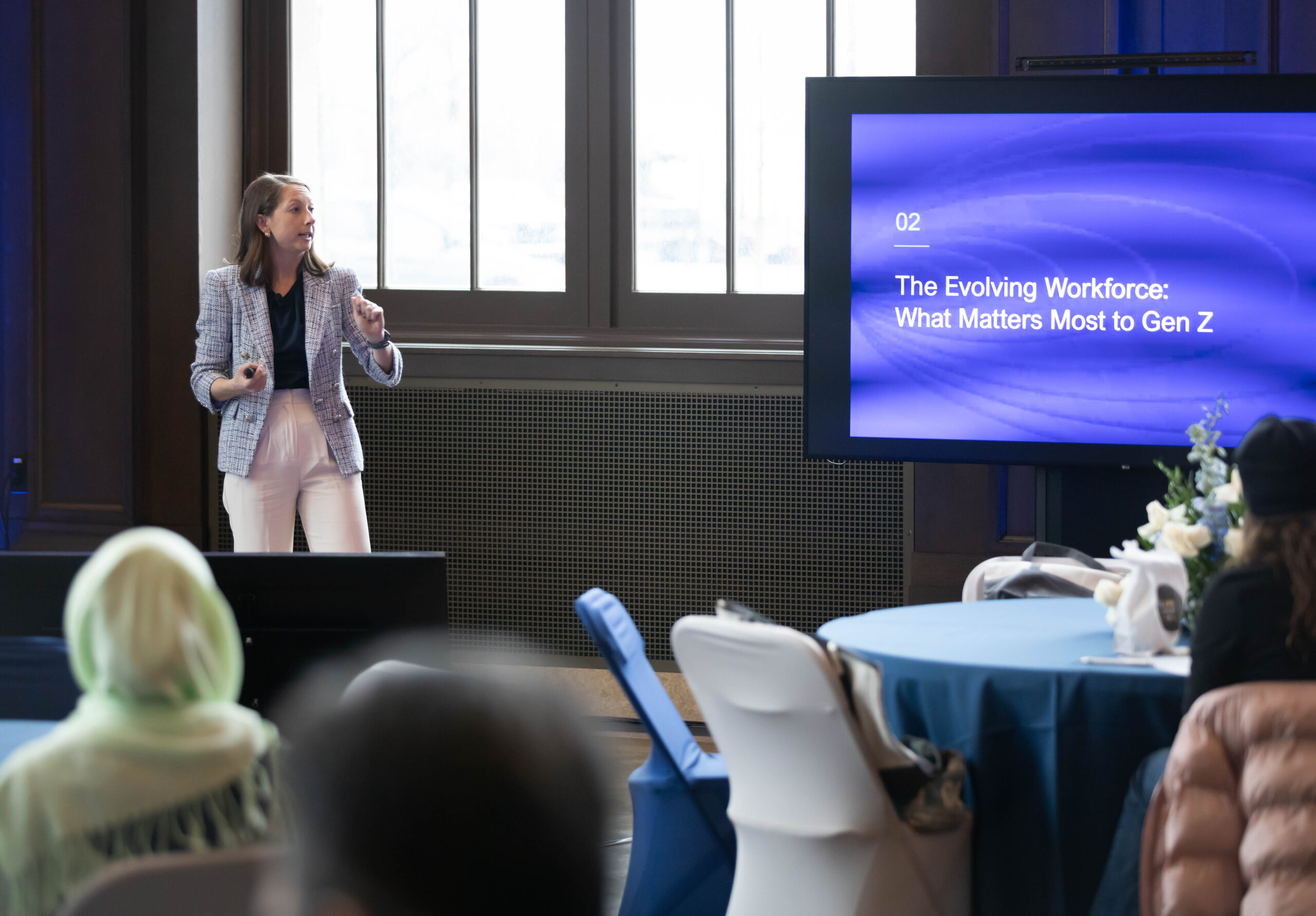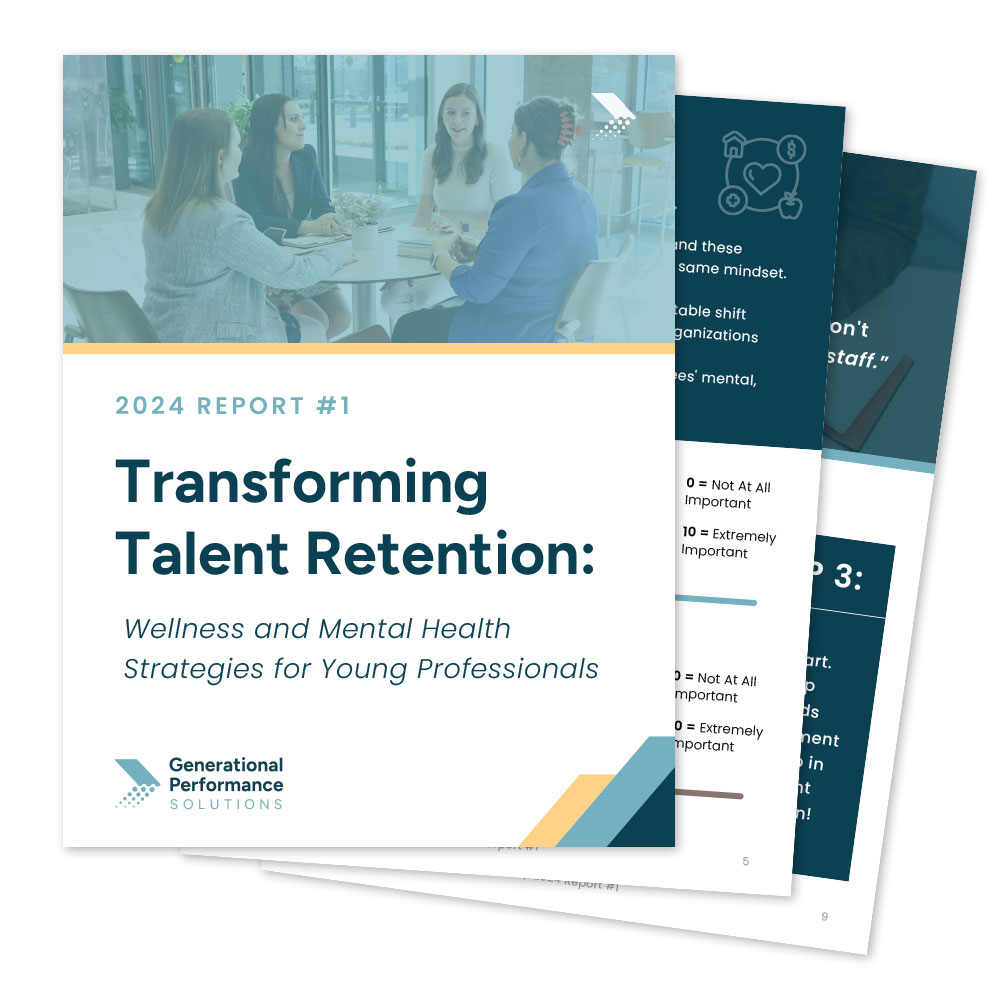Generative AI just went fully mainstream
Generative AI has leapt from R&D labs to the employee break room. In barely two years it’s become the assistant that drafts tomorrow’s slide deck, writes today’s meeting recap, and even suggests a punchline for the group chat. Pew’s February 2025 pulse check found that one-in-six U.S. workers already route at least part of their day through AI, while another quarter say pieces of their role could be automated right now—yet a majority admit they’re more worried than hopeful about where that path leads.
The uncertainty is magnified by a policy vacuum. A Talker Research–Grammarly survey of 2,000 knowledge workers shows 62 percent would gladly hand routine chores to AI, but only 38 percent say their employer has spelled out when, how, or even if they’re allowed to do so.
When we overlay age-based attitudes on these headlines and insights, a rich spectrum emerges.
Gen Z tends to sprint ahead: roughly half use AI every week, and three-quarters expect it to reshape their work within the next 12 months—a thrill shadowed by worries that entry-level rungs will vanish before they’ve climbed them. When we chat with Gen Z, they tell us that they are using AI beyond just their workplace and it’s becoming part of their everyday routine.
Millennials, often the in-house translators for this technology, rate their own AI fluency high but keep one eye on bias and ethics. This generation is using AI to help explain reports, identify discrepancies with daily tasks and even using it for therapy.
Unsurprisingly, Gen X plays pragmatic skeptic—comfortable with technology yet relentless about ROI and data privacy—while many Baby Boomers stay cautious observers. Only about a third believe AI will genuinely make their jobs easier, and just one in five have been offered formal upskilling, leaving some to feel the workplace is moving on without them.
These are trendlines, of course, and don’t tell us the whole story. A Baby Boomer can be your most innovative prompt engineer; a Gen Z hire can be deeply skeptical. Data tells us where to look, not who people are.
The Generation + AI Spectrum
When only a few people adopt AI, they create their own shortcuts that IT never sees. Those who don’t adopt keep doing things the old way—and may take years of client insights and institutional memory with them if they leave. The bigger the gap gets, the more it breeds confusion, mistrust, and ultimately higher turnover.
So where do you go from here? Over the next few months, different generations will utilize AI so differently that tensions and frustrations will form in your workplace. How will you be ready?
Here are a few tips that we recommend to ensure you’re mindful of all levels of AI comfort in your workplace:
- Pick one shared pain point. Choose a task everyone hates—say, meeting-note summaries—and let every age group test the same tool. A common win builds momentum fast.
- Pair confidence with context. Match an AI-savvy Millennial with a relationship-oriented Boomer; one brings useful shortcuts, the other brings nuance.
- Write guardrails in plain English. Clear do’s, don’ts, and data boundaries lower anxiety for skeptics and rein in rogue prompting. This should already be in your workplace policies, so if it’s not, make this a priority.
- Blend tech lessons with EQ coaching. Prompt engineering is useful; judgment, feedback loops, and client empathy keep the results worth sharing.
Ready to go deeper?
Our new keynote and half-day workshop—“AI Across Generations: Harness Tech Without Losing Talent”—unpacks these strategies in detail and hands teams a playbook they can start using the very next day. If you’d like an early look, sign up for a short call here and book your event.
AI’s code may be age-agnostic, but its impact isn’t. Read the room, close the gaps, and you’ll gain more than efficiency—you’ll keep every generation rowing in the same direction.
Did you like this week’s post? Then you might like these posts below.
An Updated Conversation on Hybrid and Return to Work
Transforming Talent Retention: The Benefits and Wellness Report
How to Get Your Team to Show Up to Work on Time
What’s Next?
Ready to transform your multigenerational workplace culture? Contact GPS! We can help you develop a thoughtful hiring strategy that fosters positive relationships, strengthens your employer brand, and attracts top talent. Let’s ensure your benefits pave the way for a dynamic cross-generational workforce! To learn more about how our services can help you uncover the power of social media in recruiting and retaining professional talent, schedule Your Free Planning Session Today.

